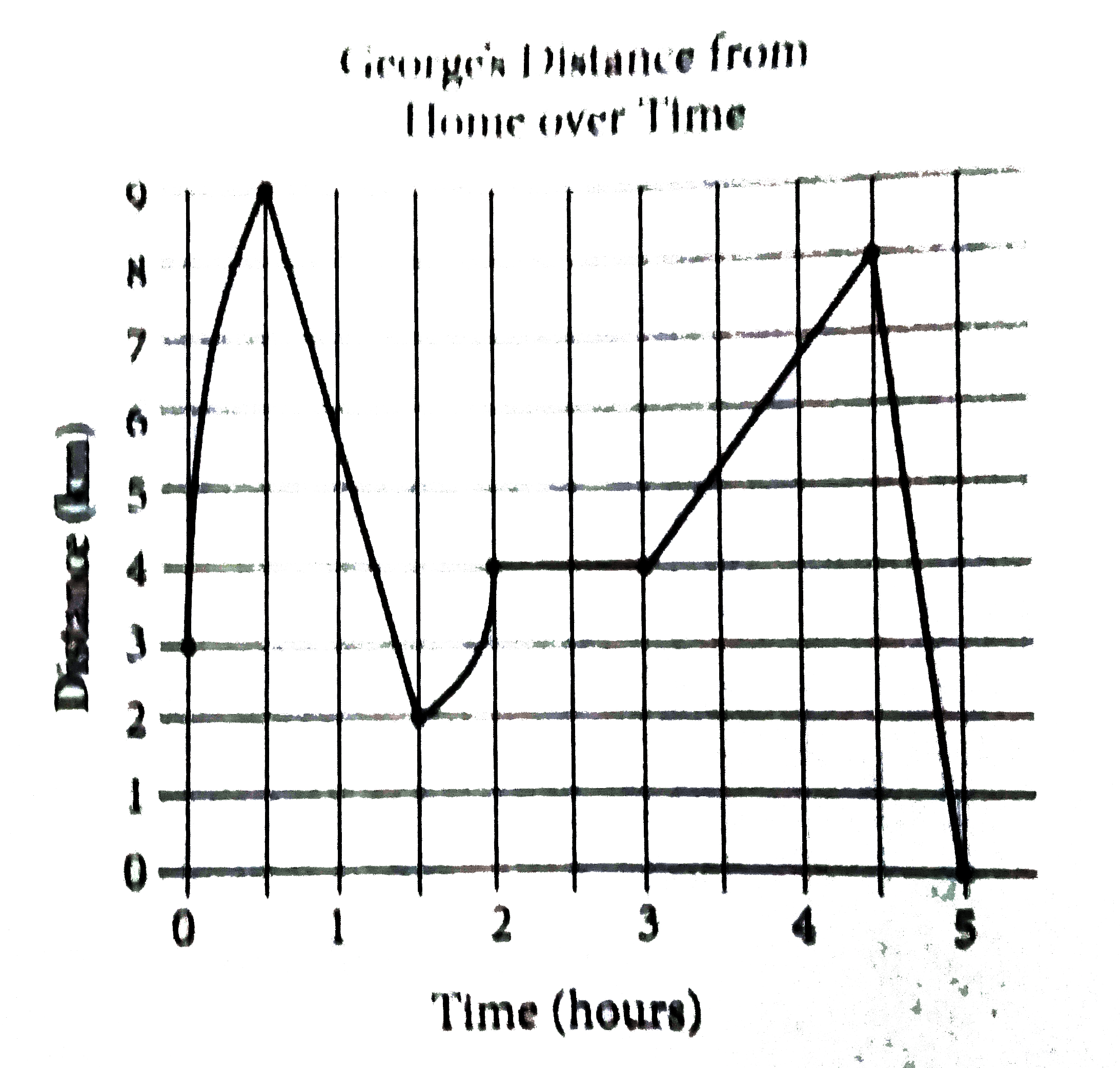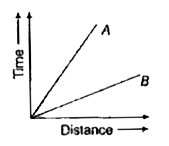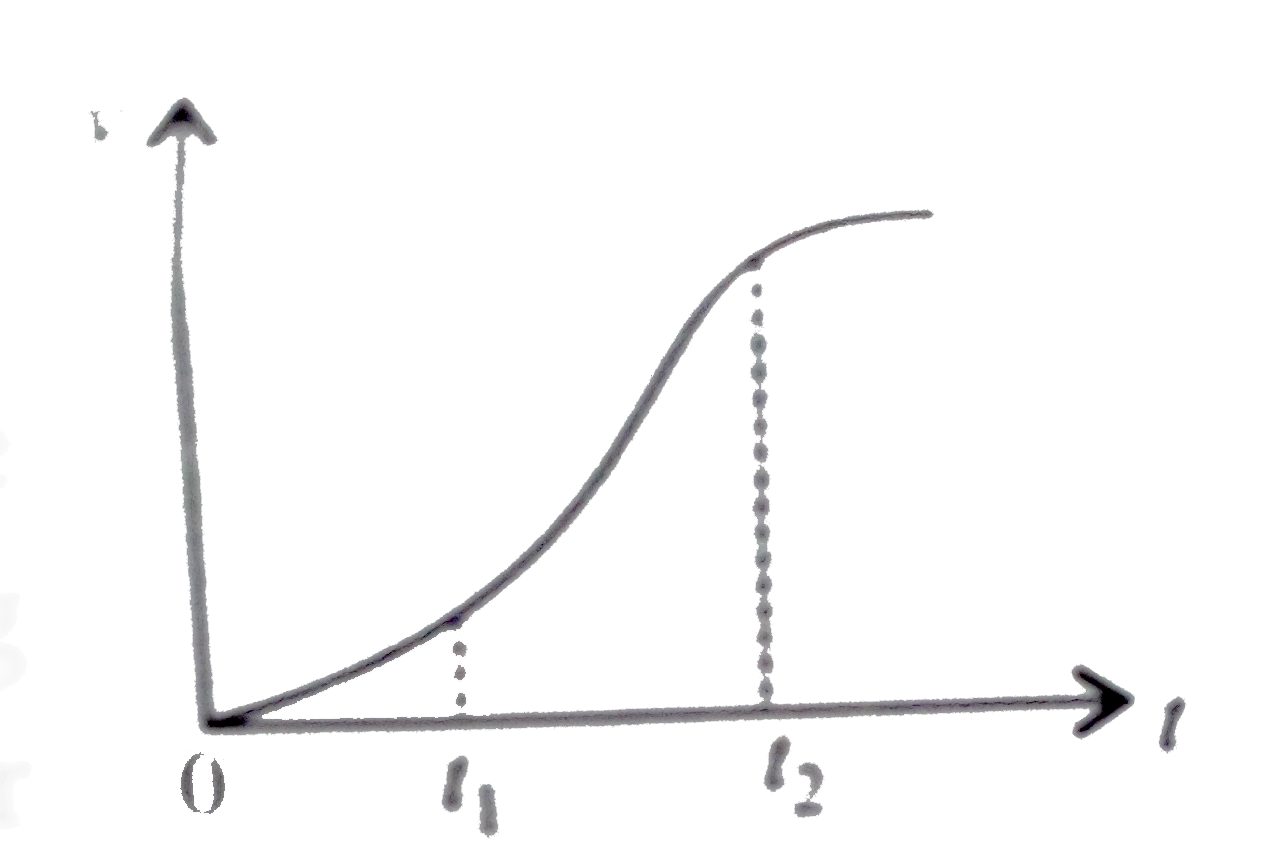A particle covers a distance from A to B over a period of time, the distance versus time plot is shown below. Then which of the following is true for the motion of the particle ?

Both average speed and instantansous speed are always zero.
Average speed is always non zero but average speed can be zero.
Instantaneous speed is always non zero but average speed can be zero.
Both average speed and instananeous speed aer always non zero.
The correct Answer is:B
Given,
A particle covers a distance from A to B over a period of time.

The motion from A to P and Q to B is non-zero and positive. Thus, average speed is always non-zero. The distance travelled between point P to Q is zero. Thus, instantaneous speed is zero.
Topper's Solved these Questions
- BOOK - SIA PUBLICATIONCHAPTER - QUESTION PAPER EXERCISE - CHEMISTRY8videos
QUESTION PAPER
- BOOK - SIA PUBLICATIONCHAPTER - QUESTION PAPER EXERCISE - CHEMISTRY8videos
QUESTION PAPER
- BOOK - SIA PUBLICATIONCHAPTER - QUADRATIC EXPRESSIONS AND THEORY OF EQUATIONS EXERCISE - Problems71videos
QUADRATIC EXPRESSIONS AND THEORY OF EQUATIONS
- BOOK - SIA PUBLICATIONCHAPTER - SAMPLE PAPER 2017EXERCISE - CHEMISTRY3videos
SAMPLE PAPER 2017
Similar Questions
A particle covers equal distance aroung a circular path, in equal intervals of time. Which of the following quntities connected with the motion of the particle remains constant with time?
View SolutionA particle is constrained to move on a straight line path. It returns to the starting point after 10 sec . The total distance covered by the particle during this time is 30 m . Which of the following statements about the motion of the particle is false
View Solution
Knowledge Check
- Question 1 - Select One
A particle covers equal distance around a circular path, in equal intervals of time. Which of the following quantities connected with the motion of the particle remains constant with time?
AdisplacementBvelocityCspeedDacceleration - Question 2 - Select One or More
A particle is forced to meove on a straight line path. It returns to the starting point after 10seconds.The→taldistancecoveredbythepartic≤dur∈gthistimeis 20 m. Which of the foolowing statements are true regarting the motion of the particles .
Athe average velocity of the particle is zeroBthe displacement of the particle is zeroCthe average speed of the particle is 2.0ms−1Dthe displacement of the particle is 20m. - Question 3 - Select One

George recorded his distance from home over a five-hour period, his distance and time are shown in the graph above. According to the graph , which of the following is NOT true about the five-hour period?AGeorge's distance from home increased at a constant rate during the first hour of the five-hour period.BGeorge's distance from home reached its maximum during the first hour.CGeorge remained a constant distance from his home for one hour.DGeorge was moving further from his home for a longer period of time than he was moving closer to his home.
A particle is constrained to move on a straight line path. It returns to the starting point after 10 sec . The total distance covered by the particle during this time is 30 m . Which of the following statements about the motion of the particle is false
View SolutionThe distance-time graph for the motion of two vehicles A and B is given below. Which one of the following statements is true ?
 View Solution
View SolutionThe distance - time graph for the motion of two vehicles . A and B is given below. Which one of the following statements is true ?
 View Solution
View SolutionThe velocity-time graph of a particle in one-dimensional motion is shown in the figure. Which of the following formulae is correct for describing the motion of the particle over the time interval t1 to t2?
 View Solution
View SolutionThe velocity-time graph of a particle in one-dimensional motion is shown in the figure. Which of the following formulae is correct for describing the motion of the particle over the time interval t1 to t2?
 View Solution
View Solution

